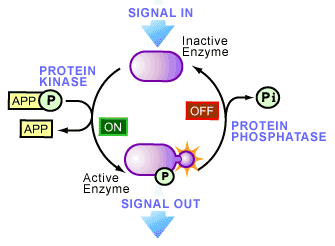In the first post of this blog, I promised that I would talk about more than just phosphate. So before I get into some detailed studies about how scientists plan on dealing with the phosphate decline, I thought I would cover another, some would say more “important”, scarce plant nutrient.
Nitrogen is not only the most expensive necessary nutrient to apply in agriculture, but it can be loss quite easily in the field. The run-off of agriculture nitrogen causes soil and water pollution. It can also cause global warming through emissions of nitrous oxide.
But let’s be honest, nitrogen in agriculture is currently at quite a different place than phosphate. Nitrogen is renewable, whereas phosphate is not because we are never going to have a planet without nitrogen. However, it is still in a problem-state. Agriculture will not run out of nitrogen, but it almost wishes it could...
What I mean by that is simply the cost and consequences associated with nitrogen application to fields are not outweighed by the benefits. We need to design nitrogen- efficient plants, much in the way that we need to design phosphate-efficient plants. To do so, we need to concentrate on the main reoccurring theme throughout this blog- scientific integration.
We need data from transcriptome studies, functional genomics, quantitative genetics, ecophysiology, soil science, and native biochemistry to truly understand whole-plant crop behaviour. With this understanding, efficient crops will be easily created and designed. However, researchers need one another. A geneticist cannot do his work without an ecologist. A biochemist cannot do his work without a physicist.
In March of 2010, a wonderful paper came out in explanation of the current nitrogen crisis and the steps being taken to fix this problem. Written as almost a review in the Annals to Botany Journal, this paper delivers everything I could want to know about nitrogen in one place.I mean come on, look at the amazing integrative model below.
Plants absorb nitrogen in the form of nitrate or ammonium through their roots. Nitrogen is lthe imiting factor for plant growth. Nitrogen is necessary in plants because it is needed in amino acids, proteins, DNA and enzymes. The use of nitrogen by plants involves several steps including uptake, assimilation, translocation, recycling and remobilization.
I will concentrate on the part of this article I personally feel has the most merit. Nitrogen uptake by roots and assimilation of nitrogen into the plant’s metabolism are integrated to match the nutrient demand of the whole plant. Therefore, the expression and activity of transport systems used to scavenge for nitrogen in plant roots are tightly-regulated.
There are mechanisms at the transcriptional level which results in an upregulation of genes when nitrogen is low and a downregulation when nitrogen is high. Specifically, several NRT2 and AMT1 transporters and Nia and Nii genes have been found to be transcriptionally repressed by the presence of nitrogen. When the plant is signaled by biochemical mechanisms in the roots that there is a lack of nitrogen, genes such as GLN and GDH can be upregulated.
Rapid post-translational or post-transcriptional regulation can directly control nitrogen uptake and assimilation. I personally think this is where the answer lies. I read a paper recently by Tsay and her colleagues called “Nitrate transporters and peptide transporters.” The paper describes their findings of the nitrate transporter NRT1, which is regulated at the post-transcriptional level. When phosphorylated, NRT1 functions as a high-affinity transporter whereas it functions in the low-affinity range when dephosphorylated. These researchers even went on to find that CIPK23 kinase is what plays a significant role in the specific phosphorylation of the NRT1 transporter.
The problem is, I can’t seem to find any data on this research after that.
If I had read this paper a year ago, I probably would have criticized these researchers for ending their findings like that. I mean come on… why not just over-express the NRT1 genes, and find a way to keep the CIPK23 kinase active so it continues to phosphorylate the NRT1 transporter.
On the other hand, I am no longer that naïve. Having spent so much time in the lab actually trying to do these things, I quickly realized it is not that simple. Over-expression of a gene takes months and months because it takes a long time to get a plant line that is homozygous. Finding out how and where on the CIPK23 kinase the active site resides is yet another long-term task. So instead of criticizing their research for lacking a complete ending, I will rightfully assume they are just in an intermission and there is more to come.
The most important thing about this blog is to educate others about the phosphate crisis and discuss current and future solutions to help the world slow down this inevitable nutrient loss. However, I do not want to pretend there are not other resources rapidly depleting or other plant nutrients that deserve some attention.
So, in summary, I hope this post shows that I am aware of the importance of other plant nutrients, and I understand that there is plenty of high-quality research being conducted on these nutrients.
But, my passion and my focus remains with phosphate… ‘til depletion do us part.
Reference
Masclaux-Daubresse C, Daniel-Vedele F,Dechorgnat J,Chardon F,Gaufichon L,Suzuki A.




No comments:
Post a Comment